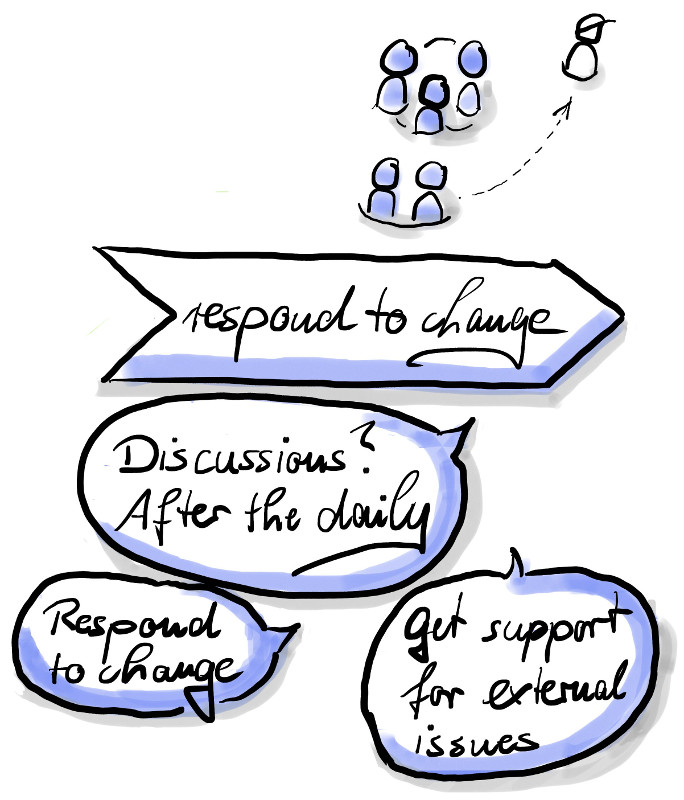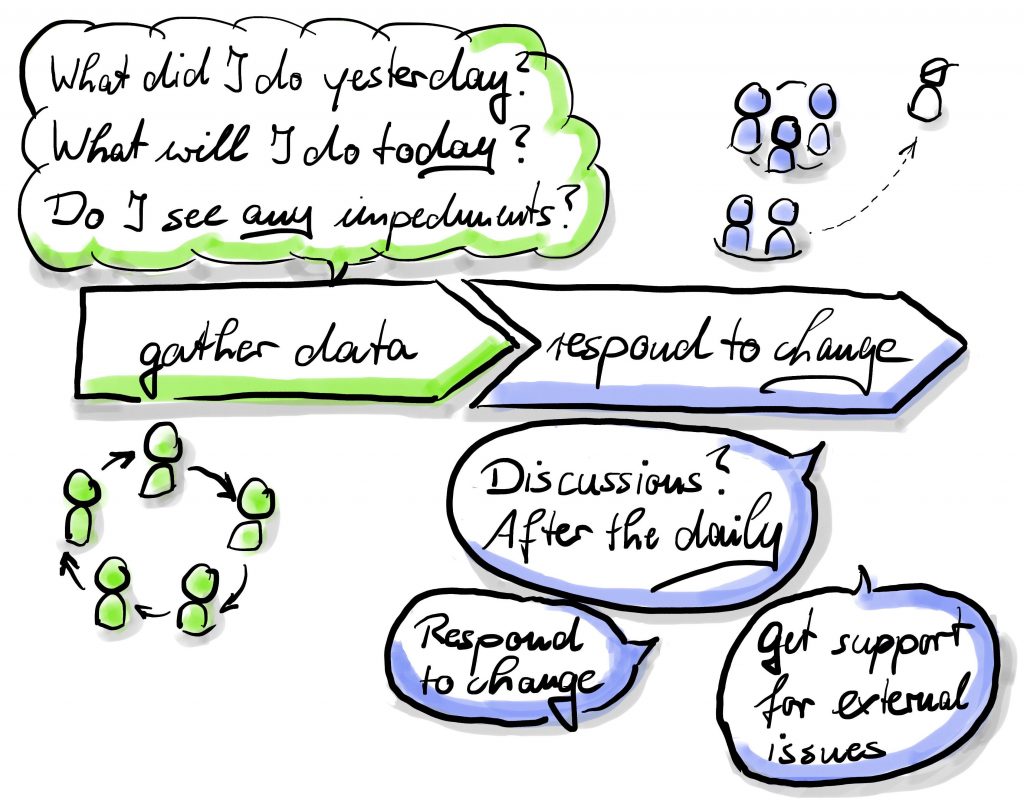In 1995, two software developers – Ken Schwaber and Jeff Sutherland – presented Scrum as a new approach to develop software. Scrum is still a good approach to start with agile methodologies. Although the procedures and the setup are very easy, it’s – as Schwaber and Sutherland say – „difficult to master“.
Mastery of Scrum is to really understand why we do what we do. It’s about the meaning of all rituals in Scrum. So, let’s go into details to see the purpose of „Daily Scrum“ (or shortened „Daily“).
Daily Fail
Imagine a team that joins every day at 10am. Everyone answers a set of questions, some managers reply by going into more details. At the end, there is a discussion between the PO and some of the IT managers… Is that a great Daily Scrum? No, it is not!
Many people regard the Daily as a report of their progress to the management. Most people know these mentioned questions:
- What did I do yesterday?
- What will I do today?
- Do I see any impediments?
Let’s come to the point: these questions are useless, when people just answer them without any further or – even worse – negative consequences. Is there any benefit to report what I did yesterday and will do today? Why should I tell the team about impediments? Why should I tell my boss that I failed?
If the daily is just seen as „reporting to the management“, it fails its purpose. A Daily Scrum has nothing to do with reporting.
Purpose of the Daily
It’s the point where the team organizes itself for the next 24 hours. The Daily Scrum is the point to answer this question:

The three questions above only make sense, when data is used to improve the work. When there is a problem a colleague wants to master, it’s helpful to provide support. And it helps the others to ask for help as well.
The Musketeers‘ Motto
In the agile world the whole team is responsible for getting things done. „One for all, all for one“ – this motto – known from „The Three Musketeers“ by Alexandre Dumas – explains the purpose of the Daily Scrum: it asks, how you as a team react on changes.
So, these questions above are just the entry point. It helps the team to gather data. The Daily Scrum gets value, when the team reflects how to response to changes.

Tactical Meetings
Imagine a basketball match. When there is a break, the team joins the trainer and discusses changes to win the game. Normally there is less time, 2 – 3 minutes, but that’s enough to change team’s tactic. The break is used as a tactical meeting.
A Daily Scrum is also a tactical meeting. It is time-boxed (ca. 15 minutes) and has the same purpose as the break in the basketball match: Is the current tactic good enough for the team? Is there a better way to reach the Sprint goal? How does the team respond to changes they hear during the „gather data“ phase?

Most of these changes are very small, i.e. some support during development or definition of a story. Sometimes, there is need for a longer discussion. It’s important for the team to be informed. The discussion itself is after the Daily. Impediments that block the team are also announced. It’s important for the team to find a solution themselves. Scrum Masters also support to get rid of impediments.
It’s not necessary to find the best solution ever (if something like that even exists). Any solution that helps is excellent. It’s great for a team to „win the game“ for itself. With tiny steps everyone in the team can concentrate on what motivates her/him most: her/his profession.

Summary
1. The Daily Scrum is a tactical meeting to answer the question „How can the team best meet the Sprint goal?“. It’s done every day, same place, same time. It’s a support to synchronize work for the next 24 hours. It keeps the team up-to-date and informs everyone about changes in the team’s tactic to reach the Sprint goal.
2. To master the Daily Scrum everyone is involved. The team organizes itself and solves impediments actively by doing it or asking for support. The company supports the teams by listening to them and solving impediments. Don’t manage the team! The Scrum Master supports the team and the company to understand the aim of the Daily Scrum.
3. The following cheat sheet summarizes on one page. It may help you to start with a good Daily Scrum.



